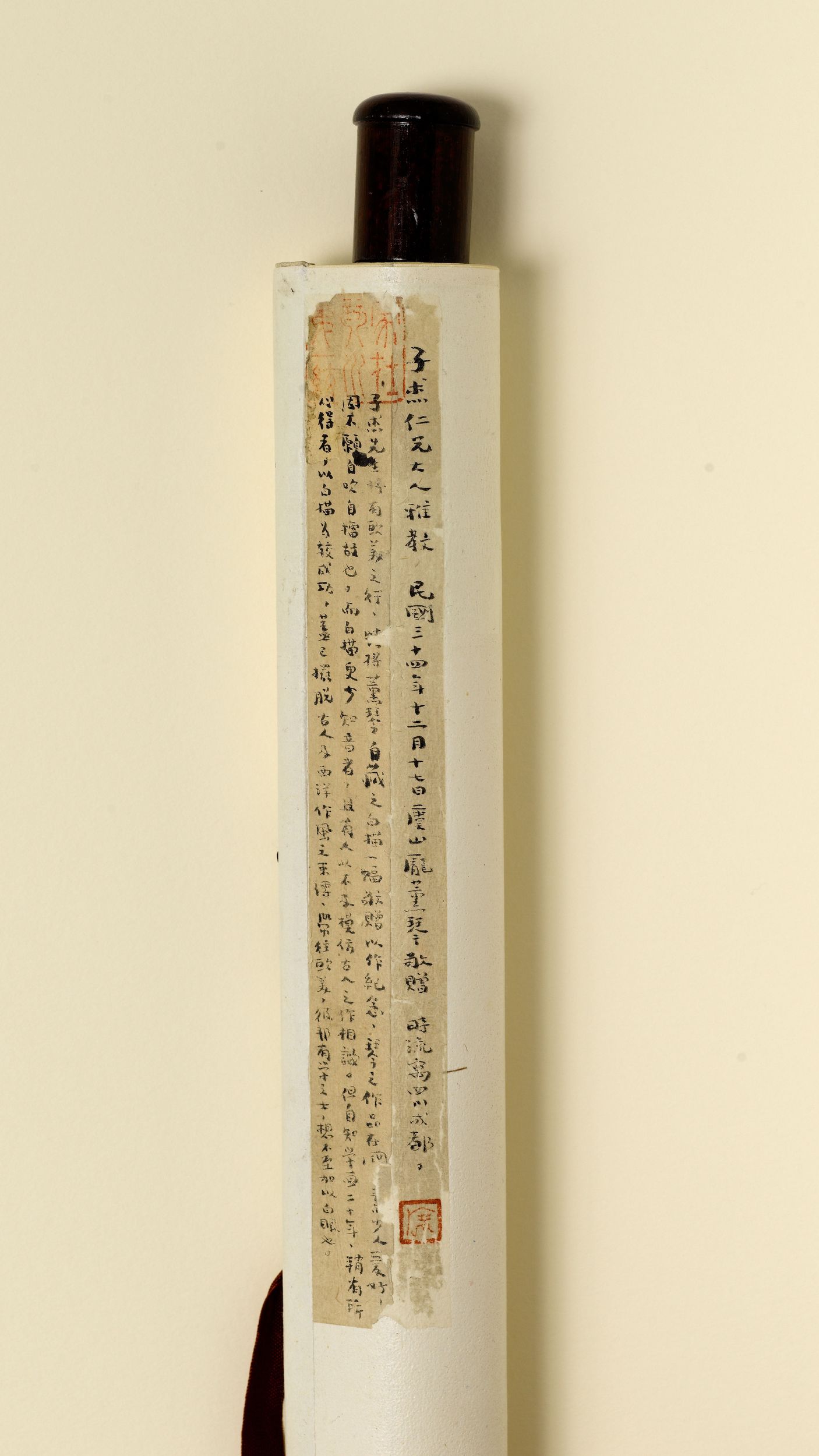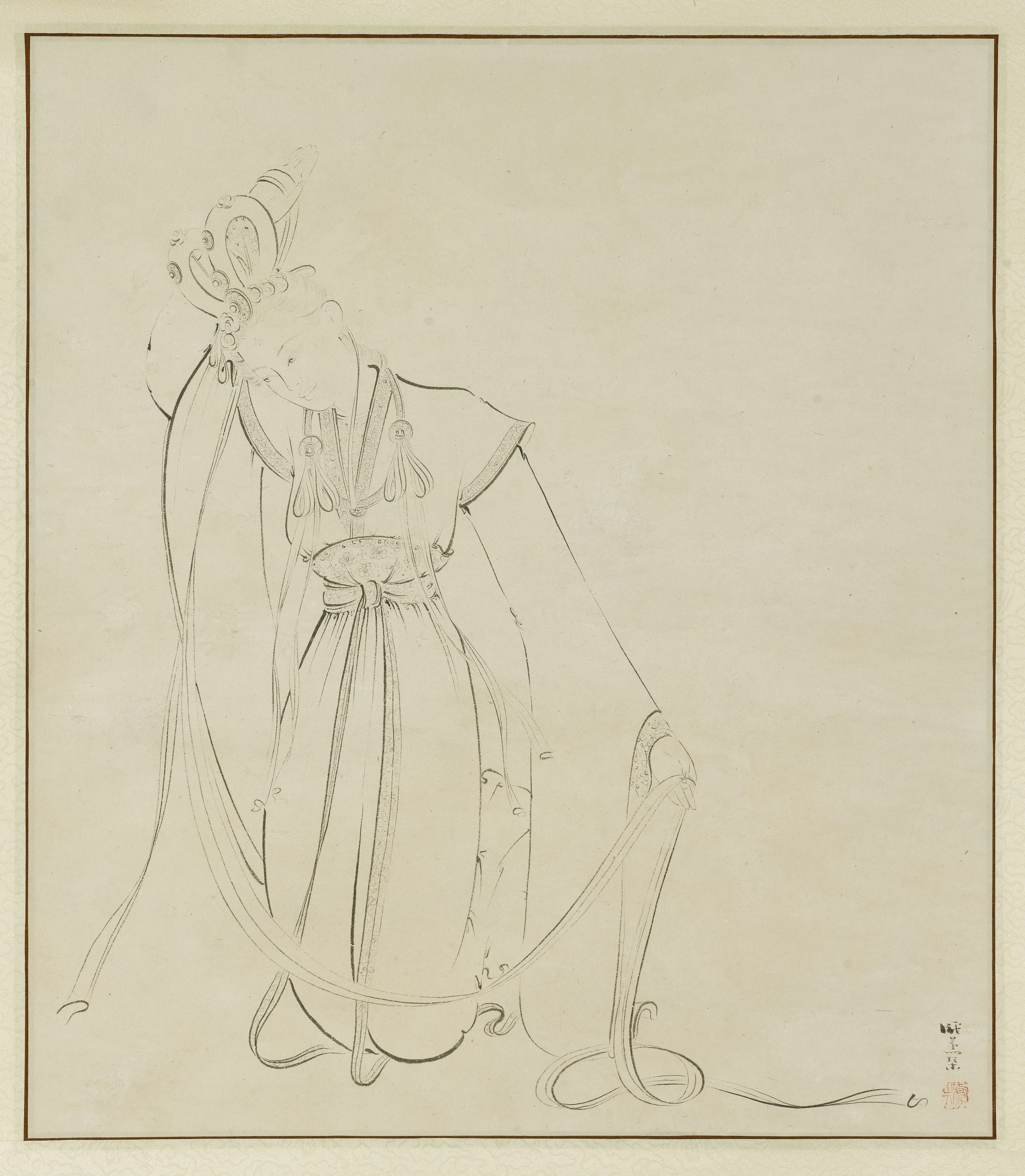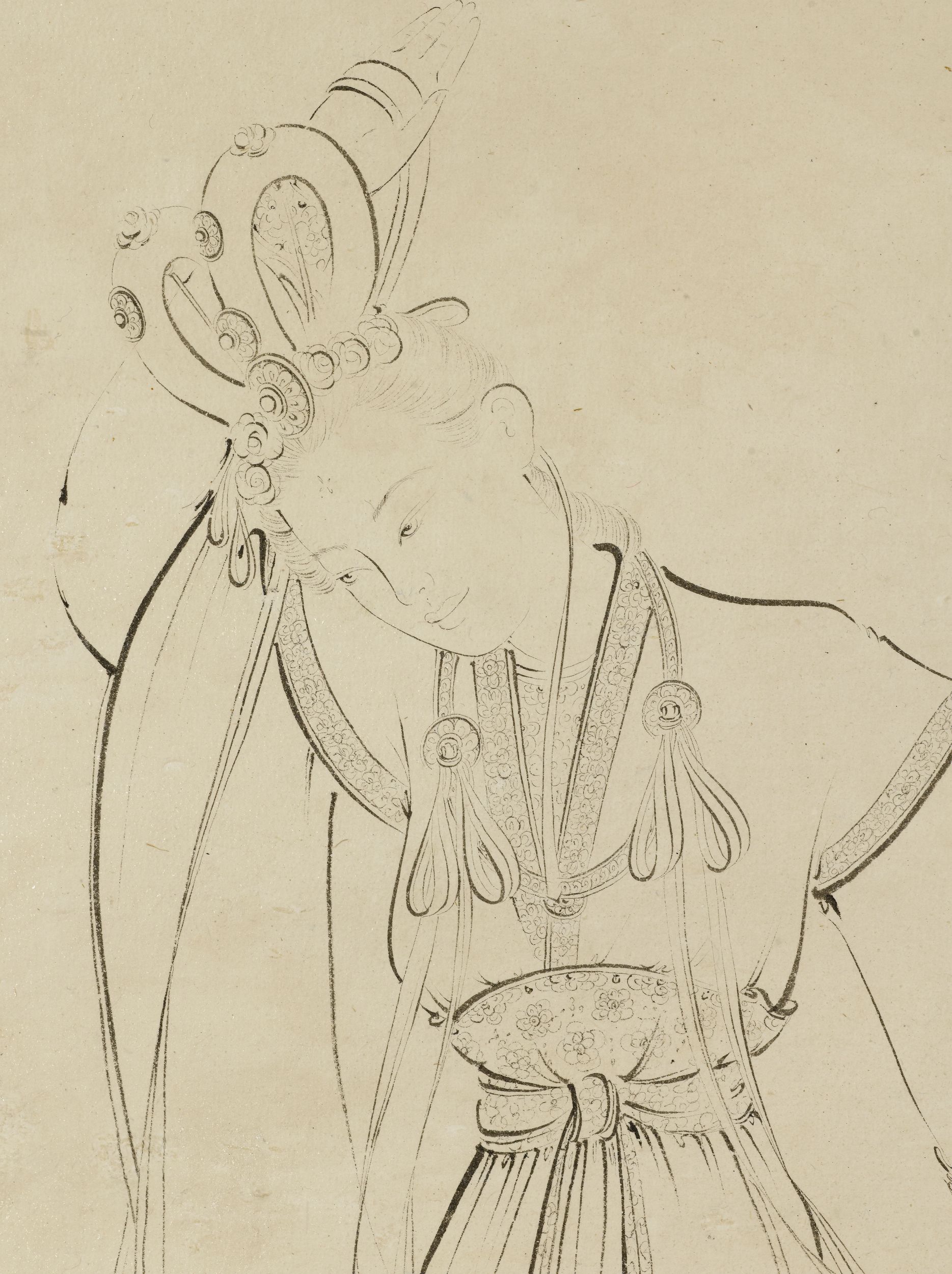
Danseuse Tang
Papier, Encre, Couleurs - Pigments
Peinture
龎薰琴; 虞山人; 龎
Don manuel : Guo, Youshou 郭有守, Docteur
M.C. 8675
Signature: 龎薰琴 “Pang Xunqin”
Painter’s seal: 虞山人 (朱文) Pang Xunqing was born in Changshu 常熟, in Jiangsu province. From 1925 to 1929, he stayed in Paris where he studied painting at various studios, notably at the Académie Julian and at the Académie de la Grande Chaumière. On his return to Chine, he moved to Shanghai. Alongside his teaching work, he founded the Storm Society (Juelanshe 決闌社), with Ni Yide, Fu Lei and a dozen young painters. Pang Xunqin’s works shown at the Society’s annual exhibitions reveal the radical nature of his painting, which echoes Western avant-garde trends that he picked up during his stay in Paris. In 1936, the artist left Shanghai and occupied several teaching positions in institutions that had been relocated because of the Sino-Japanese War. From 1938, began to take an interest in the decorative arts, and went to Guizhou to study notably the textiles of the ethnic groups in this region. In the early 1950s, he taught at the Central Academy of Fine Arts in Beijing. He was also involved in the founding of the Central Academy of Applied Arts. In 1954, his works were exhibited in Eastern Europe, and he visited the Soviet Union. Pang Xunqin was the object of political criticism from 1957 and removed from public responsibilities until 1979, when he was rehabilitated.
Dancers in ancient costume executed in baimiao 白描 (ink line drawing) were characteristic of Pang Xunqin’s work at the end of the war, between 1942 and 1946. In his memoirs, he explains that he did his first drawings of Tang dancers as a simple exercise in line drawing. But they proved quite popular and Pang Xunqin was soon producing a great number of them. Although their production was related to the financial difficulties he was experiencing at the time, these works clearly reflect the impressions that dance had made on him in Paris. They also show the importance of line for him: Pang Xunqin considered that the line, through its modulations, expresses the artist’s sensibility while also conveying light and shade.
Pang Xunqin gave this work to Guo Youshou on his departure for Europe. In a dedication written on the scroll’s title section, he mentions both the work’s future journey and its maker’s sojourn in France: “As for myself, I studied the West for 20 years, among the few things I learnt, the baimiao has been quite successful. The reason [for this success] is that I broke both with the ancients and with the Western style. By sending this work to the West, I believe it will be viewed sympathetically by the learned people of those countries.” Guo Youshou, who had already drawn the attention of Chinese collectors to the work of Pang Xunqin and enabled the acquisition of the painting Son of the Earth (Di zhi zi 地之子) by the Sichuan Provincial Museum in 1941, donated this painting to the Cernuschi Museum in 1953.
Changshu meishuguan, Danqing yipei – Baidai biaocheng, Pang Xunqin zuopin (20 shiji 30-40 niandai) quanguo xunhuizhan, Shanghai, Shanghai renmin meishu chubanshe, 2008
Pang Tao, “Pang Xunqin, Qiu Di zaoqi zuopin jiezhu”, Meishu Yanjiu, 2001, p. 25-38
Pang Xunqin, Jiu shi zheyang zou guolai de Pékin, Sanlian shudian chubanshe, 1985 ; rééd. 1988, puis 2005
Eric Lefebvre, Six siècles de peintures chinoises, œuvres restaurées du musée Cernuschi, Paris, musée Cernuschi, Paris-Musées, 2008

